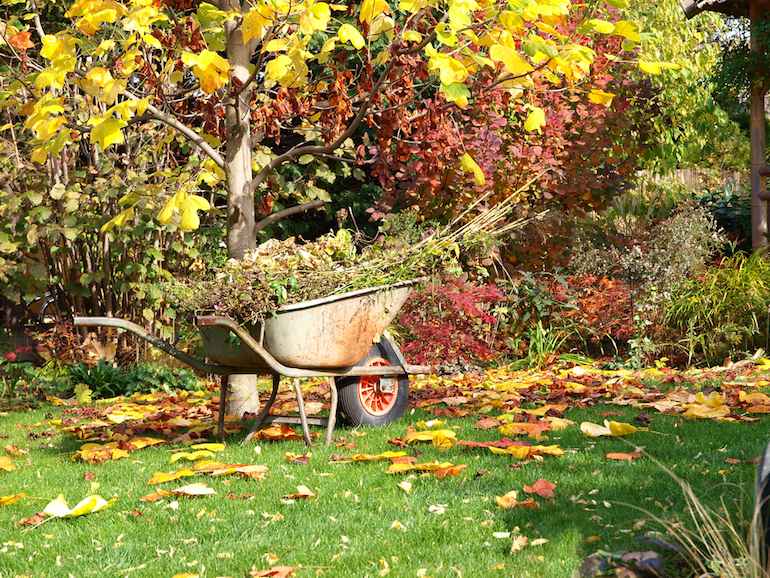When you’re in the market for new grass seed or reseeding an old lawn, timing is everything. Get it right and your seed will germinate quickly and grow evenly. Get it wrong, and even the best quality lawns seeds money can buy might not take to their new environment.
This article will explain when’s a good time to sow these seeds into your soil, so they’ll always thrive. We’ll also tell you exactly when you should avoid sowing grass seed.
The Best Time to Sow Grass Seed
Sowing lawn seed is a delicate process. You should ideally do it when the temperature consistently hovers between 8-10 degrees Celsius, but not too high as to bake or scorch your new seeds.
Plenty of moisture and plenty of sunlight are required for growth so you’ll want to time this in the autumn or springtime when weather conditions are more favourable.
Autumn: The Ideal Time to Plant Grass Seed
There are several reasons why autumn is the best time to sow grass seed.
Warm Soil
Firstly, for the seed to germinate as quickly as possible, it needs warmth. When September rolls around, the sun will have warmed up over the summer months which makes perfect soil for seeds and dampens new growth so that they grow rapidly in the spring.
Rainfall
Autumn usual brings plenty of water from rain showers which is vital for new grass seed.
Plenty of Sun
When autumn arrives there’s more sunlight available than other seasons because leaves drop off trees allowing full access to the ground and photosynthesis can take place.
Less Weeds & Fewer Birds
In autumn, weeds are much less abundant because there is less soil to grow in and birds don’t eat them as often.
Better Growth Habits
As the temperature begins to drop at the end of autumn, grass slows its leaf growth but becomes more resilient with stronger roots for wintertime.
Spring: Another Great Seeding Season
Sowing grass seed in the spring can be a great way to make your lawn look lush and green, but it is important not to neglect taking care of weeds.
The sun is higher in the sky and creates warmer temperatures while rain provides moisture for germination. However, cold weather will have cooled down the ground over winter so seeds may take longer than usual to grow depending on how much shade there is where you planted them.
The weeds and your lawn are battling each other for control of the land, so you’ll need to be vigilant. Weed killers can kill new grasses that have been seeded or sodded after treatments like scarification, but hand pulling is still an option so be prepared to remove any weeds you find.

When Not to Plant New Grass Seed
To avoid wasting time and money, it’s important to understand the times of year when you should not plant lawn seed.
Don’t Sow in Summer
Many gardeners make the mistake of sowing lawn seed during summer only to see that it doesn’t germinate because temperatures are too hot and dry, causing burnt seeds. To provide enough moisture for the soil, you would need to spend all day watering and even then, much of it would be lost through evaporation.
Avoid Sowing in Winter
Dormant Seeding is a controversial practice in the lawn care industry. The idea behind it is that it saves time for those who want to get their grass growing as soon as possible, but there are many theories on whether or not this will actually work and how well.
There are some people who advocate dormant seeding during winter months because of climate changes which make raising healthy plants difficult at other times of year, especially when unpredictable weather conditions like snowstorm can damage them before they even have a chance to take hold.
However, others warn against doing this since certain types of seedlings don’t fare well with milder temperatures followed by frosty cold snaps due to an extended dormancy period from being sown late into autumn.
In our opinion it doesn’t make sense to sow new seed in winter.
Final Verdict
Knowing when to plant grass seed is just as important as knowing how to sow it. Knowing the right time will ensure that your lawn always looks its best, and you’ll have a healthy, weed-free garden for years to come.
Autumn (usually September) is ideal if you can wait until then or April / May if you can’t. If you can’t wait till autumn but want an established summer lawn of fine turf without any shoots coming up through it before winter sets in, do it now while we’re still having good weather with occasional showers every so often.
This way there’s no need for watering because rain does the job instead once leaves stop falling from trees after autumn.
Timing is everything. The weather in the UK can be unpredictable and it’s important to take that into account before seed sowing. Consult a 14 day weather forecast so you can choose the best time of the month.